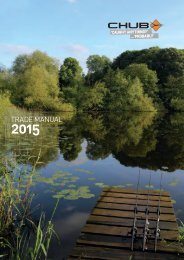CHAMPAGNE
This combination of weather influences makes for constant, moderate precipitation – a near-ideal pattern of rainfall that provides the vines with just enough water to produce quality fruit. Mean annual rainfall for the Champagne region as a whole is close to 700mm, ranging from 600mm to 900mm depending on the area.
This combination of weather influences makes for constant, moderate
precipitation – a near-ideal pattern of rainfall that provides the vines with just
enough water to produce quality fruit. Mean annual rainfall for the Champagne
region as a whole is close to 700mm, ranging from 600mm to 900mm depending
on the area.
You also want an ePaper? Increase the reach of your titles
YUMPU automatically turns print PDFs into web optimized ePapers that Google loves.
14<br />
Sustainable<br />
viticulture<br />
The river Marne in Troissy<br />
Sustainable<br />
viticulture<br />
The environmental impact of the Champagne<br />
industry was assessed in a study conducted in<br />
the early 2000s. Based on those findings, there<br />
are four major issues for action:<br />
Cover crop<br />
Reduction of additives, and the control of risks to health<br />
and the environment.<br />
For more than twenty years now, the industry has been investing huge sums in research<br />
and development aimed at controlling the possible consequences of crop protection.<br />
The result today is a significant reduction in the quantities of pesticides used, and greater<br />
safeguards in the way we use them. Half of all the products now used in Champagne<br />
are approved for organic use. Champagne is among Europe’s leaders in the development<br />
of sexual confusion techniques – a natural alternative to chemical insecticides that can<br />
virtually eliminate pesticide use.<br />
The preservation and enhancement of terroir, bio-diversity<br />
and landscapes.<br />
Vineyard soils<br />
Protecting the soil against all forms of deterioration is a long-standing preoccupation in<br />
Champagne, with particular attention to the physical, chemical and biological properties<br />
of soil. Several initiatives have already been taken by the industry to protect and add<br />
value to its heritage. Examples include: the management of groundwater resources<br />
on slopes; the promotion of the ‘reasoned’ feeding of soil and vine; the development<br />
of decision-making tools; the drawing-up of guidance maps; and the increased use of<br />
cover cropping in and around vineyards.<br />
Data collected over the past 20 years (monitoring of earthworm populations and microflora)<br />
indicate that Champagne soils today enjoy an excellent level of biological activity.

















